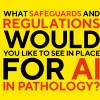A more consistent and transparent regulatory system can only be for the good, writes Sarah May.

The Department of Health and Social Care has just published its response to its consultation “Promoting professionalism, reforming regulation”. This has been a slow-burn project, one that was first floated three years ago but which is becoming increasingly necessary if regulation of healthcare professionals and the regulators themselves are to remain fit for purpose.
One of the primary issues with our current regulatory arrangements is the bureaucratic and inflexible legislation that governs the UK regulatory bodies, which has led to complex and inefficient systems that now sit at odds with the need for an increasingly flexible workforce. Anyone who receives the monthly alerts lists from the Health and Care Professions Council cannot help but be struck by the relentless number of fitness to practise hearings that take place. These in themselves constitute a mini industry and go a considerable way to demonstrating why the cost of maintaining one’s registration continues to rise and why a different approach to fitness to practise powers is needed.
A key element of the original consultation was the question of who should be regulated by statute in the future and whether the currently regulated professions should all remain as such. I hope I am not being naïvely optimistic but I would not expect this to present a threat to our profession. The opportunities for biomedical scientists to take on increasingly complex roles continues to increase; the involvement of biomedical scientists in histopathology reporting is gathering traction and a steering group is soon to be convened to explore a more restricted reporting role with a shorter training period that would be attractive to, and attainable by, a significantly greater number of individuals. Scientists undertaking histological dissection is now commonplace and the opportunity to develop a consultant level role for biomedical scientists in microbiology is now being explored.
Like all things that involve changes to legislation, this will be a slow process that will require further consultation on the specifics of the proposals now that the principles, and support thereof, has been established. Meanwhile, the new advanced biomedical scientist roles are establishing and growing in number.
Looking beyond our own profession, a more accountable, transparent, consistent and efficient regulatory system can only be for the good. There is broad support to see the current nine regulators reduced to a smaller number and for there to be greater consistency between how the different regulators work. A shared online register of all regulated healthcare professional is proposed and a single set of generic standards for all healthcare professionals
It is essential that our profession is informed of potential changes to regulation and understands any implications thereof. I will write more fully on the Government’s response to the consultation in the next edition of The Biomedical Scientist to ensure our profession is fully aware of the future direction regulation could take.
Sarah May
Deputy Chief Executive




